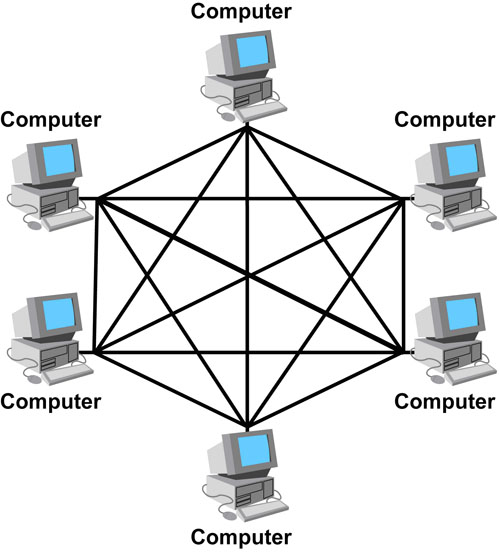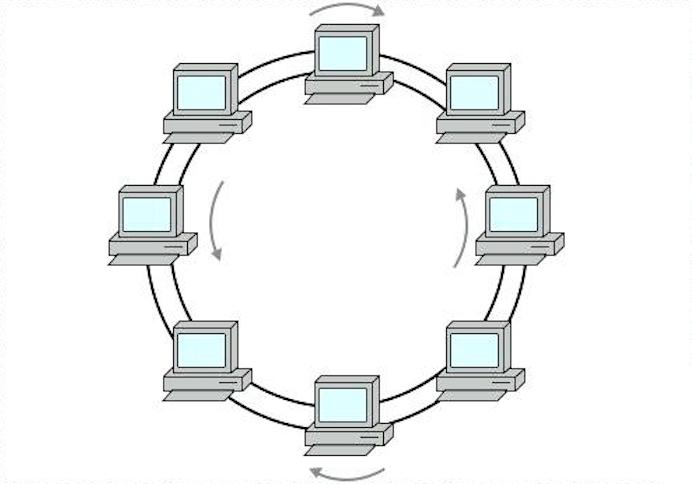
NETWORK TOPOLOGY
- It refers to the layout or structure of the network in relation with the flow of data.
- It is the way in which the elements such as computers, printers, servers, and other computing appliances are arranged in a network.
TYPES OF NETWORK TOPOLOGY

1. Linear Bus Topology
Definition: It uses one long cable (backbone) which computers and other devices are attached.
A terminator is placed at each end of the backbone to keep the signals from bouncing back and being received again by the nodes in the network.
Advantage: It requires less cable length than the star topology, which is the most commonly applied topology.
Disadvantage: The entire network shuts down if there is a break in the backbone.

2. Star Topology
Definition: It uses a central device called a hub (a more efficient device called "switch" is also used), with cables extending in all device.
Advantage: The lack of disruptions to the network when connecting or removing devices.
Disadvantage: If the hub fails, the attached nodes will not be able to use the network resources.
3. Ring Topology
Definition: It is a type of network topology wherein nodes are connected to each other forming one contagious pathway in a ring formation.
Advantage: Each repeater duplicates the data signals so that there is very little signal degradation.
Disadvantage: A break in the ring can disable the entire network just like the linear bus.

4. Mesh Topology
Definition: It means that all the nodes on the network can route data traffic on their own, which makes them more reliable and resilient than ordinary network topology .
Advantage: A failure of one device does not cause a break in the network or transmission of data.
Disadvantage: The cost to implement is higher than other network topologies, making it a less desirable option. Building and maintaining the topology is difficult and time consuming.
 |
5. Hybrid Topology
|
Advantage: Mostly found in high-performance or super computing systems due to the speed and number of processors that can handle computing tasks.
Disadvantage: Ordinary network and bus topology would act as bottlenecks, reducing overall efficiency.

No comments:
Post a Comment